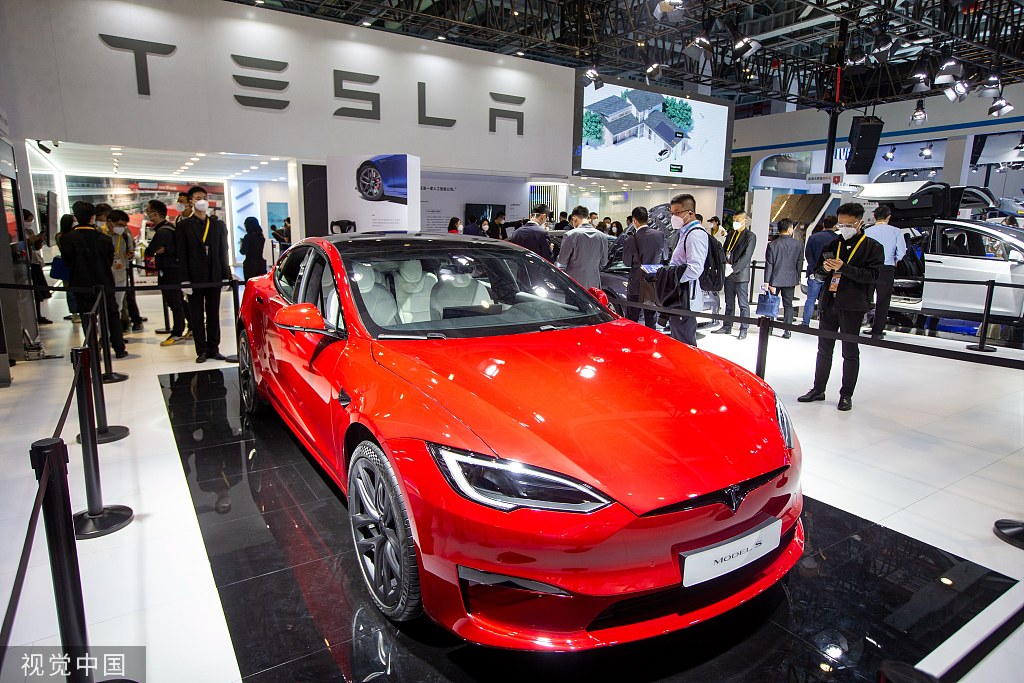
Image source: Visual China
According to foreign media reports, Tesla successfully surpassed Toyota ($3.15 billion) with a third-quarter net profit of $3.29 billion, the first time since Tesla went public in 2010.
At present, Tesla is one of the most profitable automakers in the world. Although its third-quarter net profit is not as good as that of Mercedes-Benz , it has surpassed the auto manufacturing giants BMW and Volkswagen, and is much higher than the average of the auto industry. Level. The higher net profit also gave capital markets more confidence, and investors responded to Tesla’s higher net profit. As of Nov. 7, Tesla’s market value was more than three times that of Toyota.
Koji Endo of SBI Securities believes that the biggest factor behind Tesla’s profit growth is higher sales, followed by higher vehicle prices and increased sales of self-driving software. Data shows that Tesla delivered a total of 343,000 new cars in the third quarter, a year-on-year increase of 42.4% . In the past two years, Tesla’s main sales models, Model Y and Model 3, have nearly doubled, accounting for more than 90% of the total. sales.
The growth in market demand brought about by the accelerated adoption of electric vehicles has created the basis for Tesla’s rising sales. The Boston Consulting Group said in June that electric vehicles would account for 39 percent of global new car sales by 2030, up 11 percentage points from a forecast a year earlier.
Higher profit per vehicle is the key to Tesla’s high profitability when sales are not as good as those of established automakers. An analysis shows that although Toyota sold 2.62 million vehicles in the third quarter, 7.6 times the quarterly sales of Tesla’s 344,000 vehicles, the average net profit per vehicle was only $1,200, eight points of Tesla’s $9,570. one.
With the support of higher profits, Tesla chose to cut prices in the Chinese market to further seize the market and expand sales.

On November 8, Tesla released official news that consumers who purchased existing cars and limited auto insurance between November 8 and November 30 can enjoy a discount of 8,000 yuan for the final payment. Purchased during the 31st, you can reduce the balance of 4,000 yuan. On October 24, Tesla directly lowered the prices of some Model Y and Model 3 models , with a maximum drop of 37,000 yuan.
The decline in Toyota’s net profit is due to a number of external factors. In addition to the loss of 450 billion yen ($3.07 billion) in quarterly operating profit due to increased material and power costs for suppliers, Toyota also paid 969 million to withdraw from Russian production. A one-time fee of 100 million yen (approximately $660 million). Although a 370 billion yen ($2.53 billion) boost from a weaker yen offset some of the impact, the profit slide was unavoidable.
Goldman Sachs Japan’s Kota Yuzawa said, “Toyota’s third-quarter net profit decline does not equate to a decline in its actual earnings potential.” In terms of operating profit, Toyota still leads Tesla’s $3.69 billion with $4.08 billion.
Toyota’s bigger problem is that its electrification transition is significantly behind other traditional automakers. Although Toyota has set a goal of selling 3.5 million electric vehicles by 2030, the bZ4X is currently its only mass-produced electric model.
Toyota executives also don’t seem to agree on a complete electrification transition. One Toyota executive told an earnings briefing on Nov. 1 that the company was exploring other options for mass-producing electric vehicles, while another said Toyota couldn’t afford to lose out on electric vehicles.
Toyota President Akio Toyoda prefers hydrogen energy technology and believes that electric vehicles are not the right direction for new energy vehicles. In addition, he said, electric vehicles are not the best solution for reducing carbon dioxide emissions in regions that rely heavily on fossil fuels, and there are still a large number of customers in markets where Toyota operates that cannot be covered by reliable electricity supply. For these people An internal combustion engine might be a better option.
media coverage
IT Home Fast Technology Fast Technology Interface
Related events
- Tesla’s first single-quarter net profit surpassed Toyota’s, and insurance subsidies were introduced again after price cuts in the Chinese market
- Tesla delivered over 340,000 vehicles in Q3, but the market value is still missing 500 billion2022-10-03
- Tesla is taking more money to invest quickly 2022-06-23
- Unaffected by negative news, Tesla’s sales in China account for half of the world’s 2021-07-28
- Tesla and Toyota were revealed to be “hand in hand” for the second time to cooperate to break through and seize Asian share2021-03-30
This article is reprinted from: https://readhub.cn/topic/8kLFc7SAGY3
This site is for inclusion only, and the copyright belongs to the original author.